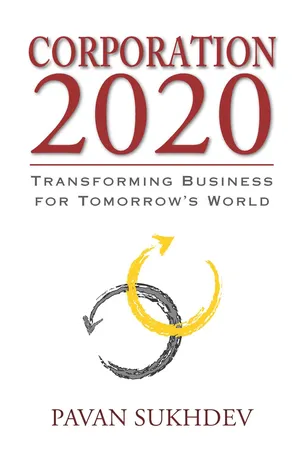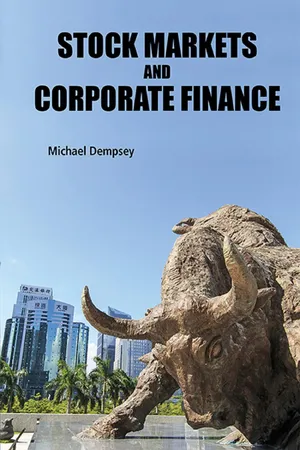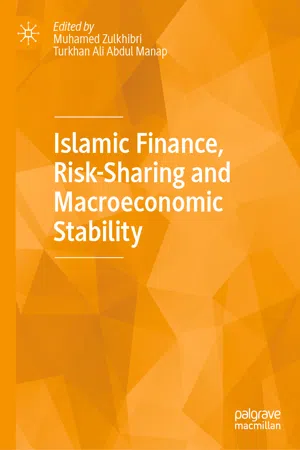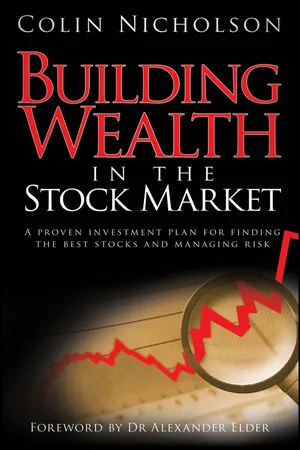Business
Financial Leverage
Financial leverage refers to the use of debt to increase the potential return on investment. It involves using borrowed funds to finance the operations and growth of a business, with the aim of magnifying profits. While it can amplify gains, it also increases the risk of financial distress if the business is unable to meet its debt obligations.
Written by Perlego with AI-assistance
Related key terms
7 Key excerpts on "Financial Leverage"
- eBook - ePub
- Brümmer LM, Hall JH, Du Toit E(Authors)
- 2017(Publication Date)
- Van Schaik Publishers(Publisher)
An extension of the study of capital structure, after investigating the EBIT-EPS approach, would be to include the concept of Financial Leverage and its implications. In studying this concept, we shall observe the implications of varying capital structures in attempts to boost returns to owners, and also the implications of the financial risk associated with such variations will become evident. This concept will be discussed in the following section.Financial Leverage
Introduction
The concept of total leverage consists of two sub-concepts or levers. The first one (the primary lever) is called operating leverage, and the second (the secondary lever) is called Financial Leverage. Because of their relatively close conceptual relationship, these two sub-concepts are often discussed together. However, in order to preserve the continuity in our discussion of capital structure and Financial Leverage in this chapter, operating leverage will be discussed in the next chapter (Chapter 13 ).The main reason for this departure from normal practice is that Financial Leverage is more closely related to capital structure than is operating leverage, which is why they are being discussed in this chapter. In order to preserve the relationship between operating and Financial Leverage, however, there will be a certain amount of repetition in Chapter 13 to aid cross-reference. For example, the definition of Financial Leverage will be given in this section and repeated when we discuss operating leverage so that we do not lose sight of the relationship between the two concepts constituting total leverage. 212The reason for employing Financial Leverage
Why would an organisation apply the principle of Financial Leverage? The answer is: in order to maximise returns to owners. This practice is followed by both creditor and debtor organisations. Consequently, knowledge of the risk implications in Financial Leverage is important to all financial managers and investors when they examine the financial position of an investment prospect.It is generally accepted in financial circles that maximising owners’ wealth is to be preferred to maximising profits. Nevertheless, the role of capital structure is of paramount importance in both instances of wealth and of maximising profitability. In either instance, a discussion of Financial Leverage becomes necessary. - eBook - ePub
Corporation 2020
Transforming Business for Tomorrow's World
- Pavan Sukhdev(Author)
- 2012(Publication Date)
- Island Press(Publisher)
Capital-adequacy rules currently apply only to banks and financial institutions, with the global deregulation binge of recent decades weakening an already sensitive last line of defense. Large corporations are able to take on aggressive risk positions in everything from commodities at the core of their business to structured derivative bets at or beyond the periphery of their business model, thanks to free markets and the ready availability of bank financing. However, two steps can be taken to improve corporations’ use of leverage. First, we can reevaluate and rebuild the financial sector’s regulatory infrastructure to better monitor systemic risk and control of leverage. Second, we can explore regulatory options for nonbanking corporations that include reasonable limitations on leverage for organizations with substantial exposure to Financial Leverage. Any corporation (be it a bank, a mortgage lender, an insurer, or a car maker) that is considered “too big to fail” is in effect placing public capital at risk, and, for that privilege, it must at least set aside some of its own capital funds as a cushion against unexpected losses. Achieving these two steps will also encourage efficient management of capital raised and will reduce the market economy’s exposure to runaway asset bubbles.The Benefits, Risks, and Costs of Financial LeverageWe can define Financial Leverage, in general, as any contract-based mechanism through which an entity gains access to assets by using funds provided by others or by putting at risk a lower amount of its own equity capital . For the average institution, Financial Leverage includes taking out loans, issuing bonds, and leasing assets. However, more sophisticated variations of Financial Leverage include executing bank repurchase agreements (repos), issuing insurance policies or guarantees, and entering structured derivatives transactions. All of these activities greatly magnify the impact of a given amount of equity capital. The downside of leverage is that it also increases the amount of risk and the size of potential losses, because the provider of funds will usually take security or ensure that it has first preference in claims (sometimes referred to as “seniority” of claim) on the assets acquired, if things indeed do go wrong.Leverage enables a corporation to make investments or incur expenses it would not otherwise have been able to undertake, based on its existing resources. Apart from the general advantage of allowing businesses to use resources beyond their subscribed capital and earned reserves, Financial Leverage has some additional positive effects: it expands consumers’ purchasing power;3 - eBook - ePub
- Michael Dempsey(Author)
- 2017(Publication Date)
- WSPC (EUROPE)(Publisher)
required rate of return on equity responds to leverage precisely as required to maintain the validity of their Proposition I. The ability to reconcile these foundational theoretical arguments of MM with the evidence of both intuition and history as summarized at the outset of this chapter, will represent the chapter’s essential intellectual challenge.8.2Leverage of the firm’s capital structure
As we observed in Chapter 1 , a firm employs a mix of debt (borrowings) and equity (shareholders’ contributions) to finance its activities. The market value of the firm’s debt in relation to the combined market value of its debt and equity identifies the firm’s Financial Leverage or gearing, in what we term the firm’s capital structure. Thus, we identify the firm’s (or project’s) leverage (L) as2where VDdenotes the market valuation of the firm’s (project’s) debt and VEdenotes the market valuation of the firm’s (project’s) equity.3 The proportion of the capital structure contributed by equity is then determined as , so that we haveThe terms “leverage” and “gearing” are both descriptive words. A lever is that which on a fulcrum allows for a small force to move a greater force.4 A gear, in a car or bicycle, for example, is that which translates an input rate of revolution into a higher rate of revolution. To see why we use the words “lever” and “gear” to express a firm’s level of debt, consider the following two alternatives by which we might choose to finance an investment.An investment opportunityFor many of us, a house purchase with a mortgage represents our greatest exposure to Financial Leverage.Suppose, you see a property, which you believe presents a good investment opportunity. Suppose that the property can be purchased for $100,000, but that you can afford only $10,000. Conceptually, two strategies to raise the full $100,000 present themselves:Strategy A: Become heavily levered/geared by borrowing $90,000 at, say, 10% interest per annum. In this case, you finance your investment with a combination of equity (your own cash investment, representing ownership, $10,000) and debt (your mortgage, representing borrowing - eBook - ePub
Kickstart Your Corporation
The Incorporated Professional's Financial Planning Coach
- Andrew Feindel(Author)
- 2020(Publication Date)
- Wiley(Publisher)
In a nutshell, borrowing money to invest is like doing what banks do. Banks take the money we deposit, pay us an interest rate, and then go off and invest in something else, generating a potentially higher rate of return. It's known as the concept of using other people's money (OPM).The most important aspect of leverage is that it is a blade that cuts both ways: it can offer massive financial benefits or become a major financial burden. The key is to use leverage prudently, investing wisely in the appropriate investment accounts within disciplined and certain time frames, and to make sure that it is suitable for your specific risk tolerance.Leveraging can be used to improve your long-term effective rate of return within your corporation assets, or help build your non-registered assets.In this chapter, we explore how leverage can enhance returns in the corporation, assist in removing funds outside of the corporation with offsetting deductions, and make your mortgage tax deductible—but we'll also look at the downside of leveraging.First, let's review the pros and cons of leveraging. Pros of LeveragingWhat You'll Get Out of This Chapter
In this chapter, we review the ins and outs of borrowing to invest, also known as the use of leverage.We review who is a suitable candidate for the use of leverage, and what products and strategies may allow you to benefit from leverage—and importantly, we also review when and for whom leverage is not appropriate, including some cautionary tales from real-life examples we've seen.You will leave this chapter with a good overview of how to use leverage to your advantage, and when to steer clear.- It may increase your effective returns.
- Your investments start working for you right away, as opposed to waiting the time it takes to save the same amounts.
- Borrowing money to invest allows you to create a tax deduction for interest costs.
- Behavioural finance principle: Leverage creates a forced savings plan, which forces you to be disciplined in your saving, perhaps resulting in less impulsive spending.
- Muhamed Zulkhibri, Turkhan Ali Abdul Manap, Muhamed Zulkhibri, Turkhan Ali Abdul Manap, Muhamed Zulkhibri, Turkhan Ali Abdul Manap(Authors)
- 2019(Publication Date)
- Palgrave Macmillan(Publisher)
After the publication of seminal papers by Modigliani and Miller (1958, 1963), this question acquired a special significance. The determinants of Financial Leverage have been investigated by several researchers. However, still there is no unifying theory of Financial Leverage even after decades of research, which leaves the topic of Financial Leverage open for further research. Financial Leverage is basically a mix of a company’s debt and equity that it uses to finance its assets. It is necessary for every firm that the Financial Leverage decision must be handled carefully otherwise the firm can face the problem of bankruptcy and financial distress. A number of theories have been advanced to explain the Financial Leverage of firms. However, a single theory is not able to explain the observed time-series and cross-sectional patterns of firms’ Financial Leverage. Below we briefly review the two fundamental theories of Financial Leverage. 7.2.2 The Trade-Off Theory The trade-off theory proposed by Modigliani and Miller (1963) explains that the most favorable level of Financial Leverage can be determined by balancing the benefits and costs associated with debt financing. This would be more like a balance between the tax shield from interest expense and the cost associated with financial distress. The trade-off theory of Financial Leverage expects that organizations with better profitability should favor to exercise debt financing rather equity financing in order to take benefits from the tax shield. Taxes, agency costs, and financial distress are the three main factors that influence a firm’s optimal Financial Leverage according to the trade-off theory. Firms will use large amount of debt in their Financial Leverage because debt provides them a tax shield, improving their profitability. However, using higher debt will increase bankruptcy costs- eBook - ePub
Cherished Fortune
Make Your Wealth Your Business
- Andrew Allentuck, Benoit Poliquin(Authors)
- 2018(Publication Date)
- Dundurn Press(Publisher)
5An asset-based loan, like any other loan taken by a business, can be converted to a credit that the business owner can use for investment through the business. If the asset is at risk, as any stock is, then it adds to the general risk of the business. If the asset is a low-risk device such as a government bond, then it may reduce general business risk. However, government bonds in general pay less interest than commercial factors will charge. So this manipulation, even if legal, would be a money loser. If the asset purchased with the factor loan is used in the business to add to its sales or profits, then it makes sense.LEVERAGE AND TIMELeverage and debt are part of commerce and finance. The most important factor that will determine success in using debt and leverage is time. A short-term loan used to buy a stock that rises smartly and is then sold, with the profits used to pay the loan off, has served its purpose. But if the quick flip turns into a long-term hold, paying interest for months or years may devastate the investment. Clearly, adding leverage to an investment adds to the management issue and makes passive buy-and-hold investing more difficult. However, if you find yourself on the opposite end of leverage, just like the polar bear, it will maul you in an instant. You wind up in the unenviable and potentially devastating position of someone who owes more money than is coming in through dividends or interest to pay the loan. It’s generating red ink, and there is no easy way out. You may be tempted to short the stock, thus making money if it should fall further. But mere oscillation of price may stick you with two costs: margin interest and interest to borrow the stock you have sold short.Thus, leverage should be used only with great care. Inevitably, it increases risk if things do not work out as expected. The inventory the small shop owner buys on credit may not sell well, and even if it does produce the expected profit, some of the gain will have to be shared with the lender in the form of interest. So leverage always changes the risk-to-reward ratio. There are no free rides in business or investing. - eBook - ePub
Building Wealth in the Stock Market
A Proven Investment Plan for Finding the Best Stocks and Managing Risk
- Colin Nicholson(Author)
- 2011(Publication Date)
- Wiley(Publisher)
Chapter 10: Managing Financial and Liquidity RisksIn the previous chapters I have discussed my strategy for dealing with the two main types of risk: market risk and specific risk. However, in devising an investment strategy, there is a need to also deal with other types of risk. The two principal risks still to be considered are financial risk and liquidity risk. Financial risk is the most straight-forward and will be dealt with first. After that, I will go through how I deal with liquidity risk. I will round out the discussion of my investment strategy by looking at several other aspects. All of them involve some element of specific or liquidity risk. They are often not given sufficient explicit attention by beginners.Financial risk: gearing and leverage Financial risk results from borrowing money. The more money that is borrowed, the greater the financial risk that is involved. To understand this, consider a simple example. A highly geared company may be financed like this:If the company makes $15 million profit (after interest payment on the debt), then the return on stockholders’ funds is 150 per cent. If the whole $60 million capital had been contributed by stockholders, then the return would have only been 25 per cent.This is the bright side of gearing. The dark side is that it also works in reverse. Suppose that instead of making a profit of $15 million, the company ran into trouble and made a loss of $15 million. In that case, the stockholders will have lost all their capital. The company could become insolvent and the directors or the lenders would call in receivers, unless stockholders were prepared to subscribe more capital.
Index pages curate the most relevant extracts from our library of academic textbooks. They’ve been created using an in-house natural language model (NLM), each adding context and meaning to key research topics.






